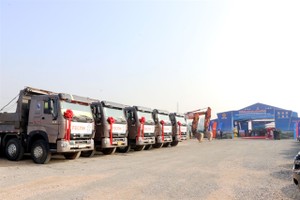
In many provinces and cities, community cultural centers, sports arenas, and village or commune cultural houses have been constructed with substantial budgets, yet they often remain underutilized. Many of these facilities sit idle or are only opened for a few special events before being closed again, becoming stark examples of waste.
These structures, which could have served as vibrant and familiar communal spaces, gathering places for local residents, have instead become distant and disconnected from the communities they were intended to serve. This disconnect is largely due to a lack of planning and foresight in the maintenance and operation of these cultural facilities.
Building a facility is one challenge; preserving its cultural and spiritual value is a tougher one. If these cultural institutions were built and managed based on real needs, they would become attractive hubs where communities could gather and form strong bonds. When they become mere vacant concrete structures, their spiritual value erodes over time. This waste is not merely evident in the unused bricks and mortar but also in the lost dreams of creating spaces that foster community culture and athletic spirit.
The waste in the management and use of cultural facilities in Vietnam stems from a multitude of factors, including inconsistent policies, inadequate laws, irrational investments, and a limited workforce.
Cultural facility development policies often lack coherence and effectiveness, leading to the construction of numerous facilities without clear strategies for operation and maintenance. This not only devalues cultural assets but also wastes resources and public funds.
Bureaucratic hurdles have forced many previously successful cultural facilities to cease joint ventures and partnerships. Without ongoing operations, additional revenue, or funds for maintenance, government investments in these facilities have become ineffective.
To rectify this situation, bold and practical solutions are needed, rooted in strategic vision and a sense of responsibility among administrators. These solutions must engage and involve the community, fostering genuine connections between culture and people's lives.
A key solution is to establish a consistent, comprehensive, and easy-to-understand policy framework to guide administrators of cultural facilities.
In addition to policy improvements, investing in the development of a high-quality workforce is also a long-term and effective solution. A team of cultural workers who are dedicated, creative, and understand the value of the facilities they manage can help to disseminate, promote, and integrate culture into modern life. Training and development programs are essential for continuously enhancing the capabilities of cultural workers and fostering a sense of responsibility and pride in serving a significant national goal.
Furthermore, there needs to be stronger integration between cultural facilities, education, and tourism. When cultural facilities become integral parts of community life, serving both intellectual and spiritual needs, they become more relevant and meaningful. This is also a way to build a vibrant, cohesive culture that fosters pride among all.
Communities should also be viewed as essential stakeholders in the preservation, development, and conservation of cultural facilities. When people are not only beneficiaries but also owners and partners, they will value and protect the cultural facilities in their communities.
Addressing the waste in the management and use of cultural facilities in Vietnam is a complex challenge that requires comprehensive solutions and the involvement of society as a whole. Only then can we build a culture that is both aesthetically pleasing and rich in content, with its values reaching every corner of the nation.
























